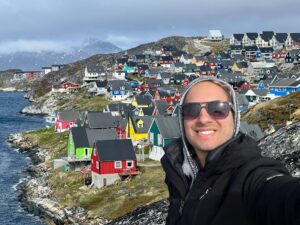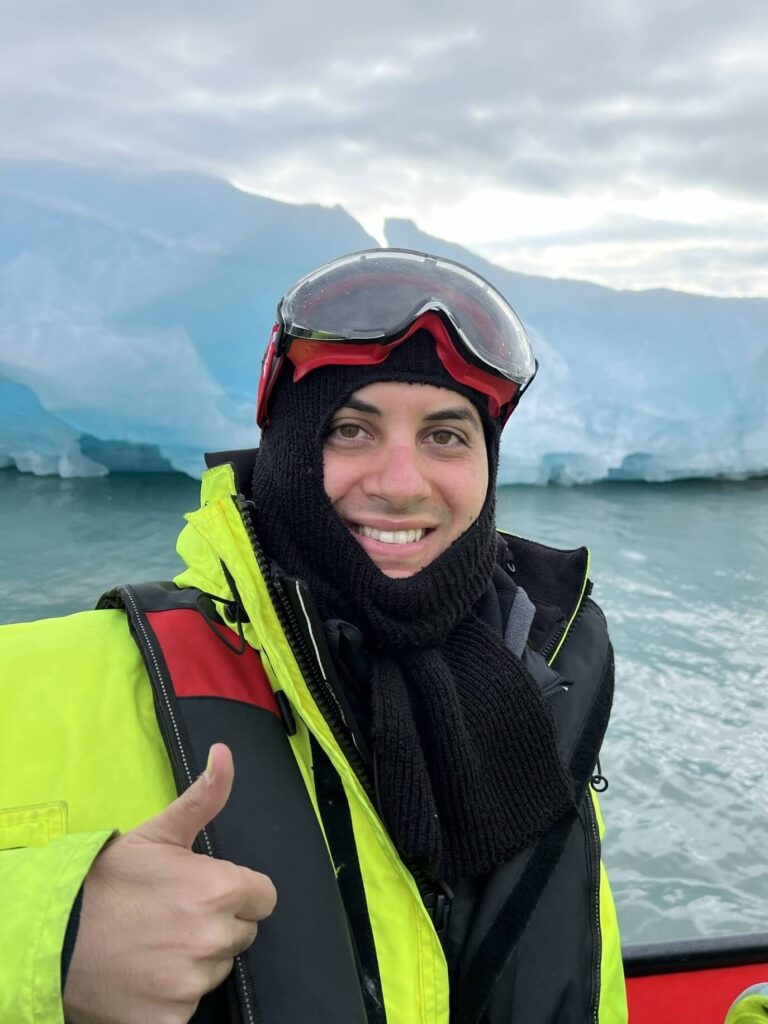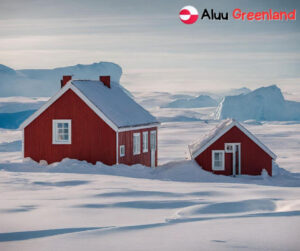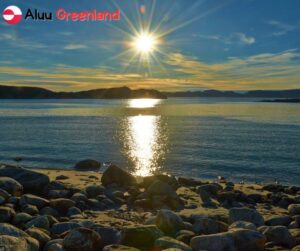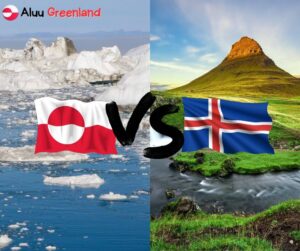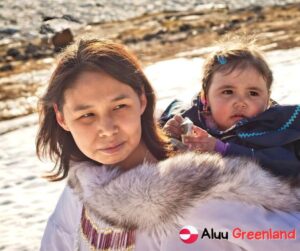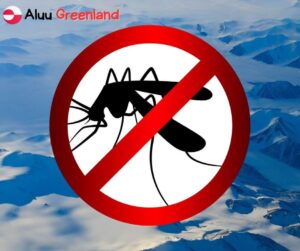Are you curious about Greenland’s climate and weather? This breathtakingly beautiful arctic country enjoys various conditions throughout the year – from deep winter snowfalls to endless sunlit summertime.
Although temperatures can be extreme, it is possible to find plenty of warm days in even the coldest seasons.
In this post, we’ll explore everything you need to know about the weather and climate in Greenland so that you can understand what makes this Arctic destination so unique!
Greenland’s Weather
While you may think of Greenland as a land of snow and Ice, it’s essential to recognize that the country’s weather depends heavily on where you are living or traveling in Greenland.
No matter north or south, east or west – one consistent fact remains: Greenland’s weather is whimsical, ever-changing, and unpredictable.
For example, You can experience all four seasons at once in Greenland!
You may be greeted with bright sunshine and snow flurries on any given day.
So don’t be caught off guard!
The Climate in Greenland
Looking at a map of Greenland, one might assume the whole country is an icy tundra – but did you know temperatures range from cozy 5.6°C (42 °F) in the summer up to a chilly -18°C (-4°F) in the far North during winter?
But before you cancel your plans to visit Greenland – don’t worry!
In Southern Greenland, where most of the population lives, the temperature can be even more than 20°C during the summer months (June-August).
As you can see, the climate in Greenland, considered an Arctic tundra is quite varied.
The country’s landscape includes mountains, glaciers, fjords, and tundra plains.
Consequently, temperatures in Greenland can vary greatly depending on location, altitude, and time of year.
Summers also bring long daylight hours throughout the country, while low temperatures and shorter days characterize winters.
No matter where you are in Greenland, it’s essential to know that temperatures can drop quickly and suddenly – so be sure to pack plenty of warm layers for your visit.

The different types of climate in Greenland
You probably noticed on the map that Greenland is full of Ice, and a giant ice sheet covers 81% of the country.
However, according to the book “Greenland in Climographs” by authors Anthony Dzik and Vincent Dzik, there are four areas in Greenland that have unique climates:
Cold desert climate (usually in central & southern Greenland), Boreal forest climate (can be found around 50 to 70°N latitude in Greenland), Polar tundra climate (which is standard Greenland’s climate around the settlements on the coast, where the winter is cold but the summer are relaxed and friendly) and Polar ice sheet climate (freezing below 0°C during the whole year – but don’t worry, I guess you won’t visit this area).
So, now that you know the basics of the weather and climate in Greenland, why not plan a trip to experience it all first-hand?
Don’t let the colder temperatures of Greenland keep you away!
Thanks to its dry air, temperatures don’t feel as cold as their European counterparts – so grab your coat and head over for a visit!
With the proper clothing, you’ll have an incredible time in this beautiful Arctic country.
The locals of Greenland always say there is no cold weather, just bad clothing!
So enjoy your visit and don’t forget to dress for the occasion.
Regardless of the season, Greenland is a wondrous place to explore!
From glaciers and fjords to endless days of sunshine – nowhere else in the world can offer such a unique experience.
The Polar Day – 24 Hours of Daylight in Summer
During Polar Day, the sun stays above the horizon for 24 hours straight, providing non-stop daylight in Greenland, only above the Arctic Circle line, during summer.
This phenomenon occurs due to the tilt of the Earth’s axis, with the poles inclined towards the sun in their respective summer seasons.
The Polar Day can be a surreal experience for those unfamiliar, as it completely disrupts the concept of day and night.
However, for the people living in these regions, this prolonged daylight is a crucial part of their daily lives and routines, especially for those whose occupations revolve around farming, fishing, or tourism.
While Polar Day may seem strange to some, it is a natural occurrence contributing to our planet’s unique beauty and diversity.
But don’t let it fool you – during the winter, you can experience 24 hours of darkness!
How the Melting Glaciers are Altering Greenland’s Landscape
Greenland’s landscape is in the midst of significant change.
Melting glaciers are causing a cascade of effects that are altering the land at a rapid pace.
As the glaciers shrink, rivers and streams form in places once covered in Ice.
The new waterways are carving through the Earth, carrying sediment and debris to new locations.
The increased water flow is also causing erosion and landslides, which can wipe out entire ecosystems.
In some areas, the melting Ice exposes new ground, allowing plants and animals to thrive in once-barren places.
However, the overall impact of the melting glaciers on Greenland’s landscape is still uncertain, and scientists are working hard to understand the full scope of the underway changes.
Weather in Greenland’s regions
South Greenland
Blessed with a mild climate, beautiful forests, and sheep farming – this part of the country’s summers arrive a little earlier than other climates.
That’s why I called it “The Greenland Riviera” – since its climate is perfect for beach trips!
Generally speaking, you can expect warm summers with temperatures ranging from 10 to 20°C (50-68°F) and cold winters around -5 to 0°C (23– 32°F).
East Greenland
They are nestled near the mighty Greenland Ice Sheet; East Greenland’s residents have faced icy conditions for years!
Pack Ice in the fjords and surrounding ocean isolated the region, but the locals are no strangers to survival.
Watch out for that pesky piteraq – these katabatic winds can go from 0 to 324 km/h in no time!
Destination Arctic Circle
Welcome to Destination Arctic Circle – where polar tundra climate meets low precipitation!
As the capital Sisimiut shows, this place is tempered by sea winds from the Davis Strait.
But it’s still a different story for those in the fjords.
This is where winter weather can be harsher – but summer days come with a little extra warmth.
Capital Region
It’s all about the tundra here in the capital region of Greenland – just like other coastal parts of this icy country. So if you’re looking for a taste of polar temperatures, this is the place to be!
North Greenland & Disko Bay
Ready to experience 24-hour sunshine? Then visit North Greenland and Disko Bay!
Spanning a vast distance from Aasiaat to Qaanaaq, our summer isn’t long but intense – only to be followed by months of living in the light of the moon and mesmerizing northern lights.
Brace yourselves – the winter here in Greenland will seem like a deep freeze, with temperatures dropping as low as -40°C! However, July through September will bring some relief as warmer temperatures melt away the snow.
Don’t be too sure – cyclones can still surprise us with an occasional snowstorm during this time!
Kangerlussuaq
Ready to embrace the extreme? Kangerlussuaq has you covered with its continental climate.
Sweltering summers can reach temperatures of 8.7°C (47.6°F) while winters plunge to -16.6°C (2.12°F).
The low annual precipitation rate of 149mm (5.8 inches) means it’s a cold desert with vegetation consisting primarily of grasses, sedges, lichens, and dwarf willow, all surviving in the continuous permafrost.
What is the weather usually like in Greenland?
Greenland experiences a climate that varies between areas, but generally speaking, it is cold and wet, with snowfall occurring frequently.
Summers are typically calm, while winters can become very cold, with temperatures dropping as low as -40 °C in some parts of the country.
The capital city of Nuuk averages around 4-7°C during the summer months and -7 to -12 °C during the winter months.
In the south of Greenland, temperatures can range from 10-20°C in summer to 0-5°C in winter.
In East Greenland, temperatures fluctuate between 5-10°C during summer and -5 to 0°C in winter.
North Greenland and Disko Bay experience 24-hour daylight during the summertime with around 5-8°C, while winter brings intensely cold temperatures that reach as low as -20 °C in the northern city of Qaanaaq.
Finally, Kangerlussuaq is home to a continental climate with summers ranging from 8.7°C (47.6°F) and winters to -16.6°C (2.12°F).
Rain is also common in Greenland, with the southern regions receiving a higher average of 243mm per year compared to the North’s 149mm.
Cyclones and katabatic winds can also bring sudden changes in weather throughout the year.
Greenland’s cold and wet climate can bring surprises throughout the year!
You can make the most of your time in this icy land with proper preparation and knowledge of the local conditions.
Is it always cold in Greenland?
Located in the polar climate zone, you can expect a chilly atmosphere all year round, and it gets cold in the winter months.
However, the temperature does vary from region to region and season to season.
Summers are usually milder in the south, with temperatures ranging from 10-20°C in summer and 0-5 °C in winter.
What is the weather like in Greenland by year?
During the summer, you can expect temperatures to reach up to 81°F – perfect for an outdoor picnic!
But in wintertime, things take a chillier turn as temperatures dip as low as 5°F, bringing snowy days and windy nights. But don’t let the clouds get you down – consistent, partly cloudy skies are part of the package year-round!
Does Greenland have four seasons?
Greenland has four seasons like the rest of the world – spring, summer, autumn, and winter!
But honestly, it’s more winter and summer than anything else – with winter lasting from December to April and summer lasting from May to October.
But still, it’s Greenland, do you remember? So you can expect the unexpected – even snow during the summer months!
And if you’re lucky, you may witness one of nature’s most awe-inspiring spectacles – the northern lights! And don’t forget about the midnight sun from April to late August.
No matter the time of year, you’ll want to pack warmly for your visit to Greenland!
Is Greenland colder than Iceland?
Yes, Greenland is colder than Iceland in terms of temperature averages. For example, the capital city of Nuuk typically ranges from 4-7°C in summer and -7 to -12°C in winter.
In Iceland, Reykjavik’s average high temperature during the summer months is 12°C (54°F), while the average low during winter is two °C (36°F).
In conclusion
Greenland is an icy land home to a range of Arctic wildlife and plants, including muskoxen, arctic foxes, narwhals, reindeer, polar bears, snowy owls, ptarmigans, lemmings, hares, and many more. Greenland offers visitors a unique experience that can’t be found elsewhere despite the year-round cold climate and occasional snowfall.
So, if you’re looking for an adventure to the Arctic, pack your warmest clothes and get ready for a wild ride in Greenland!

